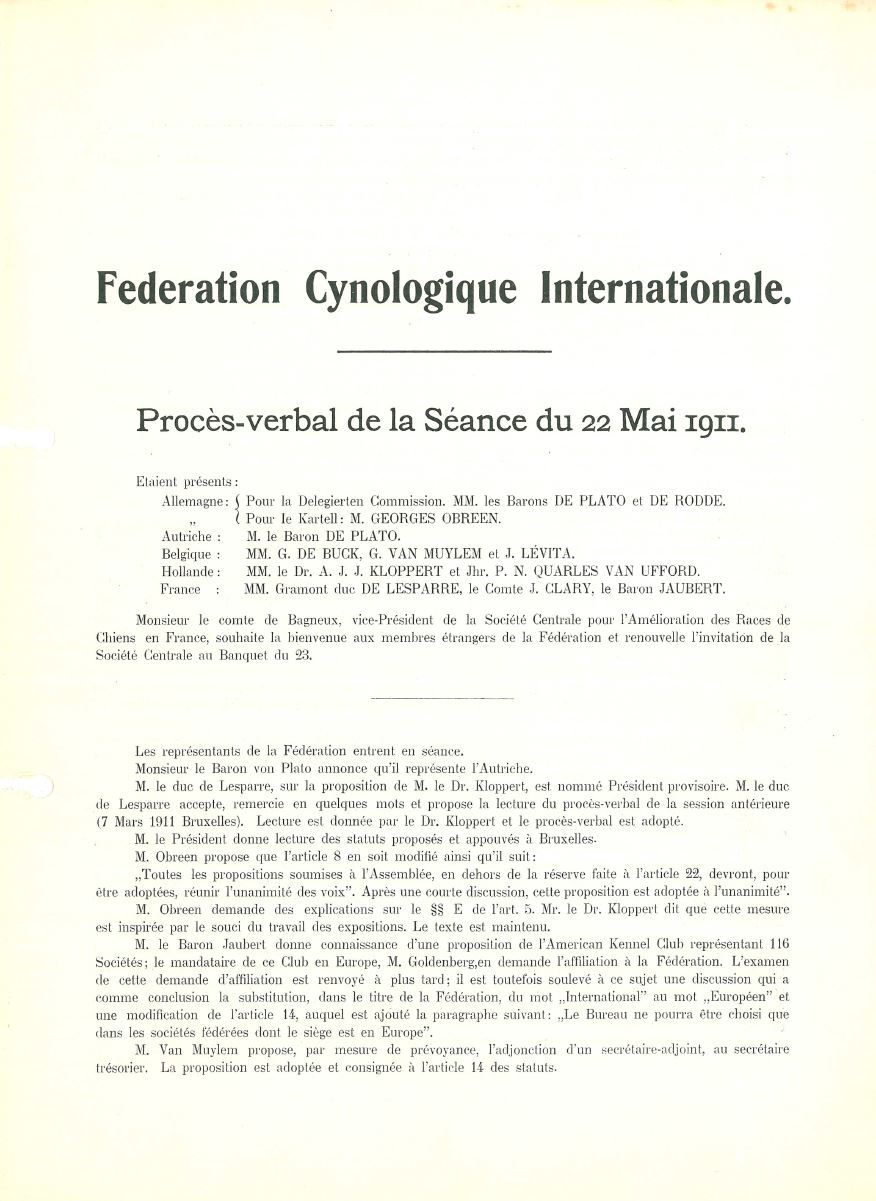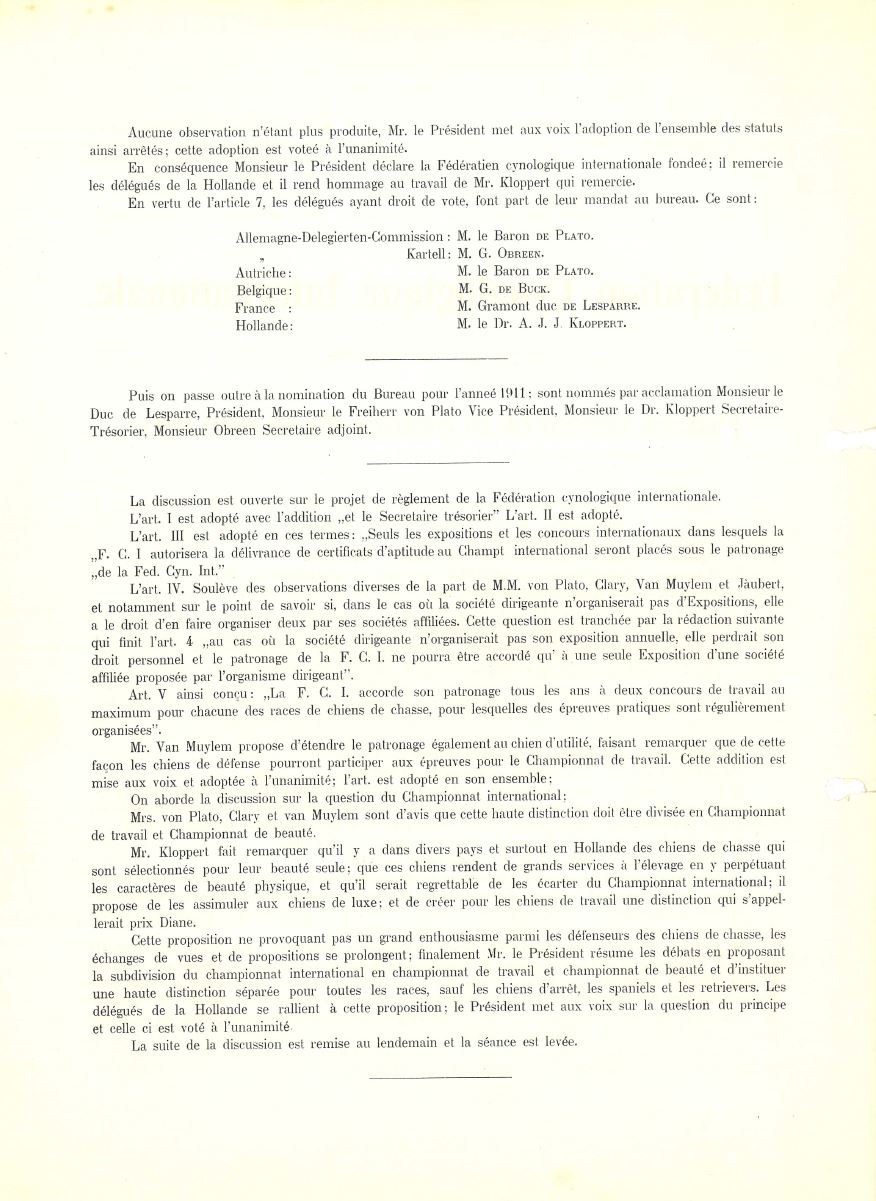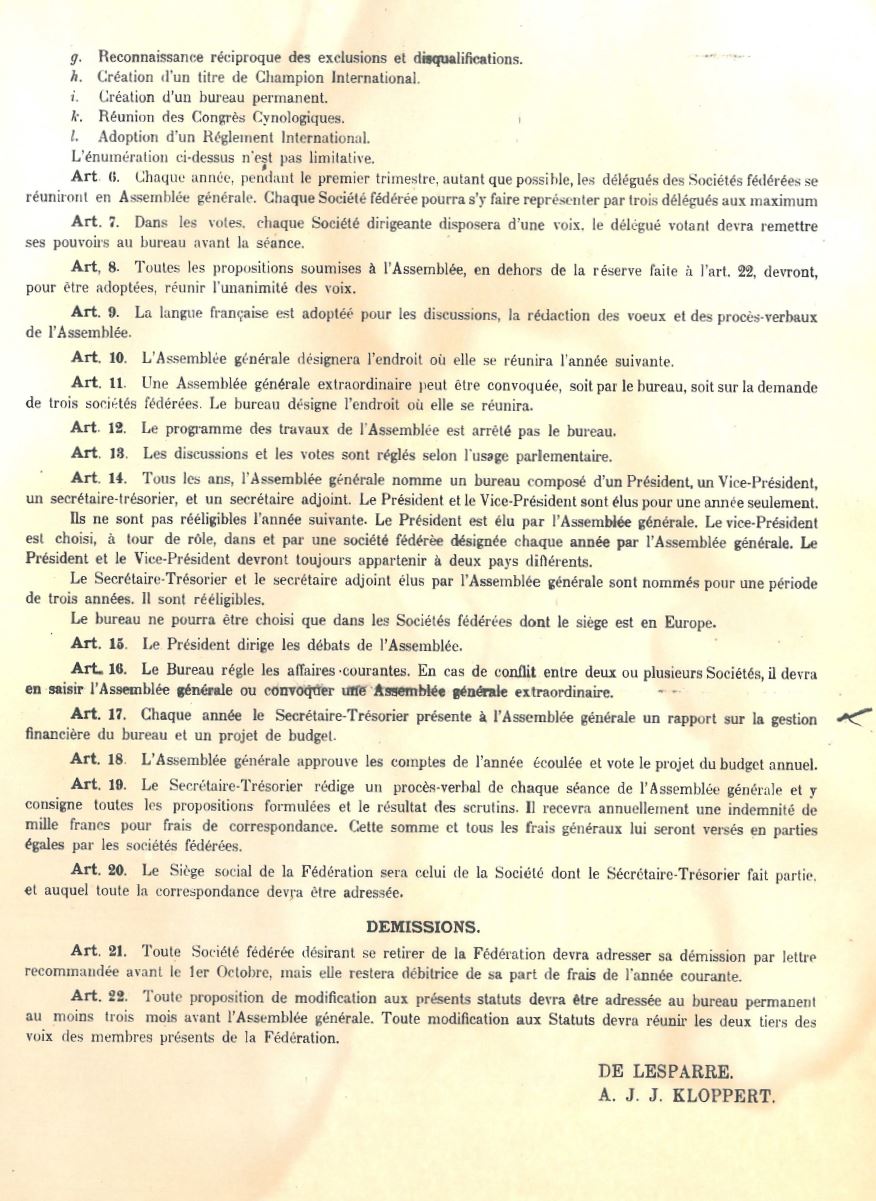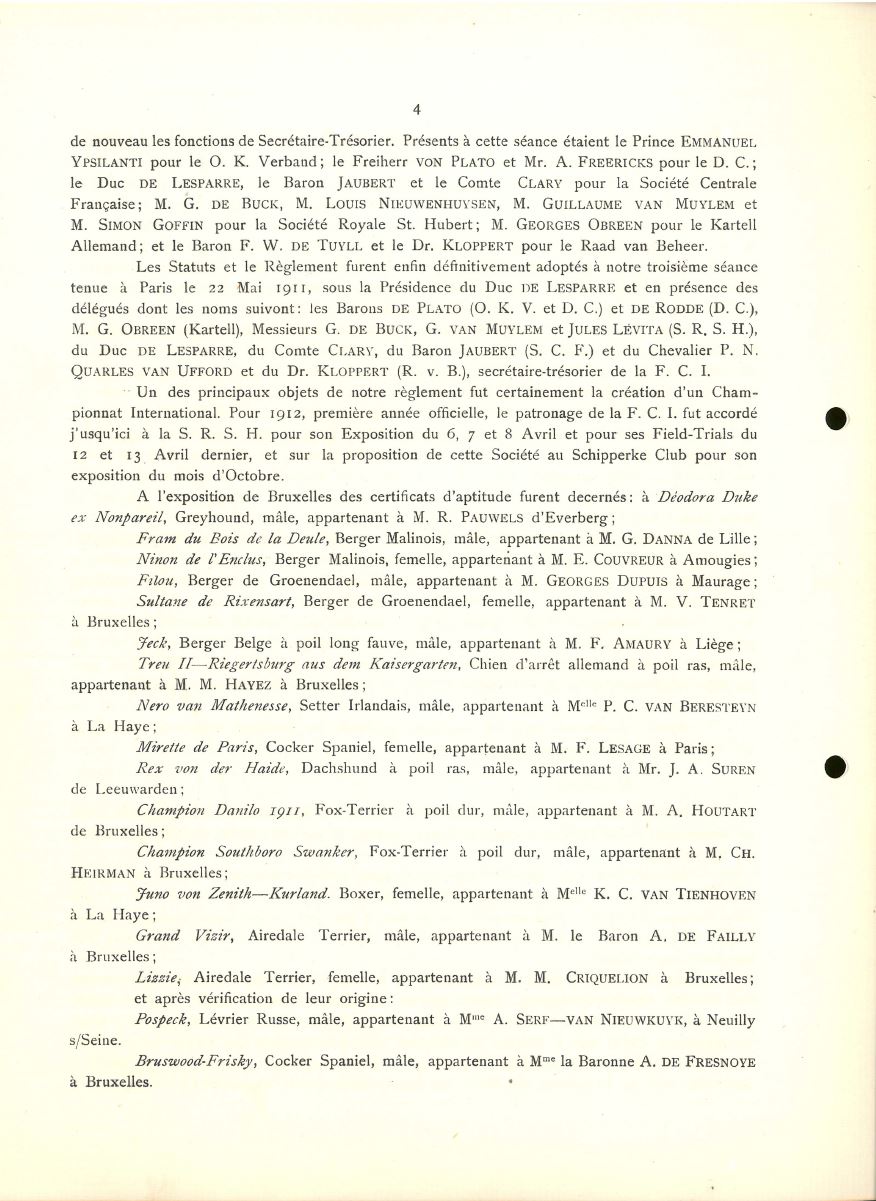The definitive Congress in Paris, 22 May 1911


Definitive congress, 1911, Paris, minutes


Definitive congress, 1911, Paris, minutes
The following countries were present:
- Germany, represented by Baron de Plato and Baron de Rodde (Delegierten
Kommission), and by Mr Georg Obreen (Kartell);
- Austria, represented by Baron de Plato;
- Belgium, represented by Mr G. De Buck, Mr G. van Muylem and Mr J. Lévita;
- The Netherlands, represented by Dr A.J.J. Kloppert and Jhr P. N. Quarles
van Ufford;
- France, represented by Mr Gramont, the Duke of Lesparre, Count J. Clary and
Baron Jaubert.
Count Bagneux, vice-president of the Société Centrale pour l’Amélioration des Races
de Chiens en France, welcomes the Federation’s delegates from abroad. At
the suggestion
of Dr Kloppert, the Duke of Lesparre is nominated as the provisional president.
The minutes of the previous meeting in Brussels on 7 March 1911 are read out by
Dr Kloppert and subsequently adopted.
The president goes on to read out the statutes proposed and approved in Brussels.
At this juncture, Baron Jaubert informs the delegates of a proposal coming from
the American Kennel Club (AKC), an association representing 116 clubs. Its delegate,
Mr Goldenberg, is requesting that the AKC also becomes a member of the Federation.
Though the examination of this request for affiliation is postponed till a later
date, it triggers a discussion which leads to the term “European” in the Federation’s
title being substituted by “International”: the Federation would from now on be
known as the “Fédération Cynologique Internationale”. It is also decided
that the
general committee could only be chosen by associations with their registered offices
in Europe and that, indicative of the apparent success of the Federation, a deputy-secretary
would also belong to the general committee, acting as assistant to the secretary-treasurer.
With no further comments coming from members, the president puts the adoption of
the statutes as currently drafted to the vote. Following their unanimous adoption,
the president declares the Fédération Cynologique Internationale (FCI)
constituted!
The next item on the agenda is the appointment of the general committee for 1911.
The following are appointed by a show of hands to form the FCI’s first ever general
committee:
- President: the Duke of Lesparre (France),
- Vice-president: Freiherr von Plato (Germany),
- Secretary-treasurer: Dr Kloppert (The Netherlands),
- Deputy secretary: Mr Obreen (Germany)
During the discussions, the assembly makes major decisions for the FCI: the creation
of the title of “Champion International de Beauté” (CIB title) as well the
award
called “Certificat d'Aptitude au Championnat International de Beauté” (CACIB).
These
awards are mentioned in the very first version of the FCI Statutes and FCI Regulations.
Another major principle, still applied today and on which our federating system
is based, is approved: the mutual recognition, by the FCI members, of the kennel
names.


First FCI Statutes, 1911


First FCI Statutes, 1911
1911 therefore is the year in which the FCI was founded. Its establishment is the
result of the efforts of experienced and perseverant cynologists and cynophiles
from Germany, Austria, Belgium, France and The Netherlands. The economic situation
at that time – often referred to as the “Belle Epoque” – is favourable for that.
Between the date of its creation and the dramatic WWI, the FCI holds different General
Assemblies. The first conference to take place after the FCI is founded is in Amsterdam,
in 1912, under the presidency of the Duke of Lesparre. In his opening speech, he
refers to the mistrust of the different kennel clubs that see the FCI as a possible
threat against their authority and independence. The Duke of Lesparre's motto is
“Ni conquérants, ni conspirateurs” (“neither conquerors, nor conspirators”).
The very first CACIB show ever conducted is organised in Brussels on 6-7-8 April
1912 followed by others in France (Paris and Lyon) and in the Netherlands
(Amsterdam).
Simultaneously, the very first CACIT trials take place in Belgium (Beuzet) and France
(Sandricourt)


6-7-8 April 1912, Brussels dog show, CACIB winners
In Amsterdam, Dr Kloppert reports on the first financial accounts of the FCI (as
of end 1911). They show a loss of 163 Dutch Florins (80 €) which Dr Kloppert has
paid himself!
The national canine organisations of Spain (Real Sociedad Canina en España), Italy
(Kennel Club Italiano) and the United States of America (American Kennel Club) are
accepted as FCI members, the latter under different conditions still to be worked
out.
Another important decision is made and worth a mention: the elected president’s
mandate starts at the end of the General Assembly. He then manages the work and
chairs the next General Assembly that will take place in his country.
The following year, in March 1913, the third General Assembly is celebrated in Berlin
(Germany) under the FCI President, Lieutenant-Colonel Rausch. The financial situation
(as of end of 1912) has improved with a credit of 3.12 Dutch Florins (1.6 €)!!
The Baron W. del Marmol (BE) is elected President. However, for health reasons,
he cannot carry out his function and the presidency is taken over by Mr Victor Du
Pré.